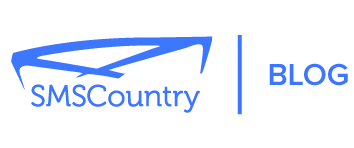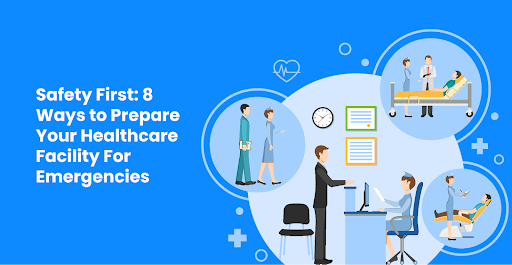This blog covers 5 SaaS security best practices shared by industry experts.
By implementing these insights, you’d be a step further in protecting your SaaS customers’ data.
Because this article is written specifically for SaaS professionals, we took the liberty of using tech buzzwords in the article.
Let’s get started.
What is SaaS security?
SaaS security is all you do to protect your applications from cyber threats and vulnerabilities. Although SaaS security is a vast topic, it has four crucial components:
- Identity and access management: This determines who can access your SaaS application. It includes authentication, authorisation, and single sign-on (SSO) capabilities.
- Data protection: Guards your data from unauthorised access. Data protection includes encryption, backup and recovery, and data governance policies.
- Network security: This involves protecting the network infrastructure that supports your SaaS application. Under this, we have firewalls, intrusion detection, and prevention systems.
- Application security: Protects your SaaS application from vulnerabilities and attacks. It includes secure coding practices, testing and validation, and regular security updates.
All these points lead to the next big question.
See: 5 SaaS user onboarding best practices according to experts
Why should you prioritise security for your SaaS application?
The following are the reasons SaaS security should be at the top of your priorities:
- Improved security: Using SaaS security practices keeps your applications from vulnerabilities and data breaches.
- Cost saving: Adopting the best SaaS security practice can be costly. But with a SaaS model, you can share the costs among all application users. This results in significant cost savings for your organisation.
- Enhanced compliance: SaaS security standards will help your organisation meet industry compliance requirements and regulations.
- Improved user experience: Securing your SaaS applications provides users with a safe space. Your users will remain satisfied and stay loyal to your brand.
- Increased productivity: Your users’ productivity increases when security breaches reduce. They can focus on their work without worrying about security threats.
Protecting your SaaS app is important, but sometimes it may pose some challenges.
Let’s talk about some of those challenges.
4 SaaS security challenges you may face
If you don’t take up the security of your SaaS apps, you may face the following challenges with your SaaS software:
1. The risk of data breaches
Data breaches are bad for business. With the amount of sensitive data stored in the cloud, you need the best SaaS security practices.
This includes implementing strong passwords, encrypting data in transit, using MFA, and updating security protocols.
2. User access management
Another security challenge you may face is managing user access to sensitive data. It is vital to ensure that only authorised users have access sensitive data.
You can achieve this through 2FA and role-based access controls. This allows you to define users’ actions based on their role in the organisation.
| SMSCountry is the best bulk SMS API service to delight your customers with fast OTPs. Learn more about our SMS services. Get started or book a demo. |
3. Risk of cyber attacks
SaaS providers face the risk of malware and other forms of cyber attack. Malware, such as viruses and ransomware, can wreak havoc on a SaaS system.
To protect against these threats, you must use SaaS security best practices. These practices include having robust antivirus and anti-malware protection and updating them.
4. Physical threats
You must pay attention to the security of your infrastructure. This includes protecting against physical threats, such as data centre breaches and social engineering.
You must also ensure that your networks and servers are secure from cyber-attacks. You can achieve this by using firewalls and intrusion detection systems.
Despite these challenges, you can still secure your SaaS applications. Here’s how to do it.
5 ways to secure your SaaS product and users
We’ll learn 5 SaaS security tips from experts. These ideas will boost the security of your SaaS app and protect your users’ data. Stay glued.
1. Encrypt your data
Garrett Bakker, a principal research analyst at 451 Research says, “Before putting sensitive data on the SaaS app, encrypt it.”
Encrypting your data is a crucial part of securing your SaaS platform. It is one of the best SaaS security practices.
Encryption converts plain text data into a scrambled, unreadable format. You can only decrypt this code with the proper key or password.
If someone gains access to your data without proper access, they can’t read it. Encrypting your data ensures that only authorised parties can access it. It also ensures the privacy of your users.
Follow these steps to secure your SaaS platform through encryption:
- Identify the types of data that you need to encrypt. These can be passwords, financial information, and personal details.
- Choose a strong encryption algorithm, such as Advanced Encryption Standard (AES). You can also use Rivest–Shamir–Adleman (RSA) to protect your data.
- Integrate the encryption process into your SaaS platform, and test it.
You safeguard sensitive information when you encrypt the data on your SaaS platform.
2. Gain visibility to who has access to your data
“Keeping track of inventory is crucial. And with your software, keeping an inventory is spot on”, says Chris Hughes, CISO and Co-Founder at Aquia Inc,
Gaining visibility is one of the SaaS security best practices. You have to keep an eye on all your SaaS usage and check out the security logs from the service provider. You must check the data from security tools like Cloud Access Security Brokers (CASBs).
Remember that SaaS solutions are robust and deserve solid security as any application. So make sure your security and IT teams are aware of this.
You must be aware of who is accessing your application and why so that you can prevent data breaches.
Here are some steps you can follow to gain visibility into your SaaS application usage:
- Track employee use of sanctioned and unsanctioned apps.
- Track access to corporate data from both managed and unmanaged devices.
- Determine who has access to which resources and review activity logs to see who’s doing what.
- Identify and assess any cloud services under usage, and look for redundancies.
It would help if you had a risk management strategy while monitoring SaaS usage to keep things safe.
SMSCountry provides fast OTP SMS delivery and great customer support. Much recommended”
– Gaurav Aggarwal, Director, Kavya Digital Solutions
3. Put in place guardrails for your users
Brendan O’Connor, CEO of AppOmni, says, “You can’t gate every single change. People are living in SaaS-based applications all day, every day. So, understand that a gate-based approach can slow down your business or make you miss key things.”
Brendan added, “Having guardrails in place is the best way to ensure your users are secure. It enables your business to progress and stay secure without losing security.”
Guardrails are measures that set boundaries for you to innovate within security policies. These controls will prevent the exploitation of your misconfigurations or vulnerabilities.
Some of these guardrails are:
- Access controls: You can put in place strict access controls. This will prevent unauthorised access to your data. It includes multifactor authentication and role-based access controls.
- Encryption: Ensure you encrypt your data to prevent unauthorised parties from gaining access.
- Monitoring and alerting: This is part of the best SaaS security practices. You must set up monitoring systems. Examples are Spunk and Datadog. These software applications will identify potential security issues in real-time.
- Vulnerability management: You can prevent your SaaS application from exploitation. All you have to do is to scan for and address vulnerabilities from time to time.
- Security training and awareness: Provide security training to your employees. This will help them understand the best SaaS security practices for SaaS-based applications. It will also reduce the risk of security incidents.
4. Monitor your SaaS environment
Brendan O’Connor, CEO of AppOmni, says, “This is not a once-a-year or once-a-quarter pen test. This is an all-day everyday problem. Monitor your SaaS applications daily. Think of them like endpoints; think of them like operating systems.
Brendan adds, “You wouldn’t monitor your endpoints once a year, once a quarter. You always have something to watch, and you need the same with SaaS.”
Track how users access and use your SaaS application resources. This will help you know how sensitive data is circulating and expose any risks.
You can also use collaboration controls to specify detailed permissions on shared files. For instance, you can prevent external users from accessing certain files.
Review the permissions of authorised users from time to time. This will ensure they are not sharing confidential files using team spaces or email.
5. Enable 2FA to send fast and secure OTPs
“This is where you can configure your SaaS platform to refuse local authentication. If any user tries to authenticate, it will redirect them to the Identity Provider (IdP).
If you want to talk to me, you will have to talk to this identity provider and do strong authentication. This is the best SaaS security practice.” Says Tim Bach, VP of engineering at AppOmni.
One of the commonest SaaS Security best practices is using two-factor Authentication. Enabling 2FA on your SaaS platform can improve security by adding a protective layer. This is crucial, especially if you handle sensitive information or financial transactions.
Here’s how you can set up 2FA on your SaaS platform:
- Decide on the method of delivering the OTP to the user. This can be via SMS, Voice, WhatsApp, or email.
- Configure your SaaS platform to send the OTP whenever a user logs in or performs a sensitive action.
- Make sure you test the delivery of the OTP to ensure that it is being sent to the correct phone number or email address.
- Educate your users on the importance of 2FA and how to use it.
It’s also essential to ensure that you send OTPs on time and in a secure manner. This means you must use a reliable delivery method, such as SMS, and ensure that you encrypt the OTP.
SMSCountry is a reliable and secure platform for sending OTP SMS. With SMSCountry, you can improve the security of your SaaS platform.
Get your SaaS application secured
You now know why you should secure your SaaS application and how to do it. Also, you know the challenges you might face when protecting your SaaS application.
Use these steps to keep your SaaS app and your customers safe.
SMSCountry is a reliable and cost-efficient SMS platform offering OTP SMS solutions. Give your customers the best service, use SMSCountry for your Bulk OTP SMS and 2FA.
You can schedule a FREE demo with SMSCountry to learn about our product. Sign up start sending fast and secure OTPs.




